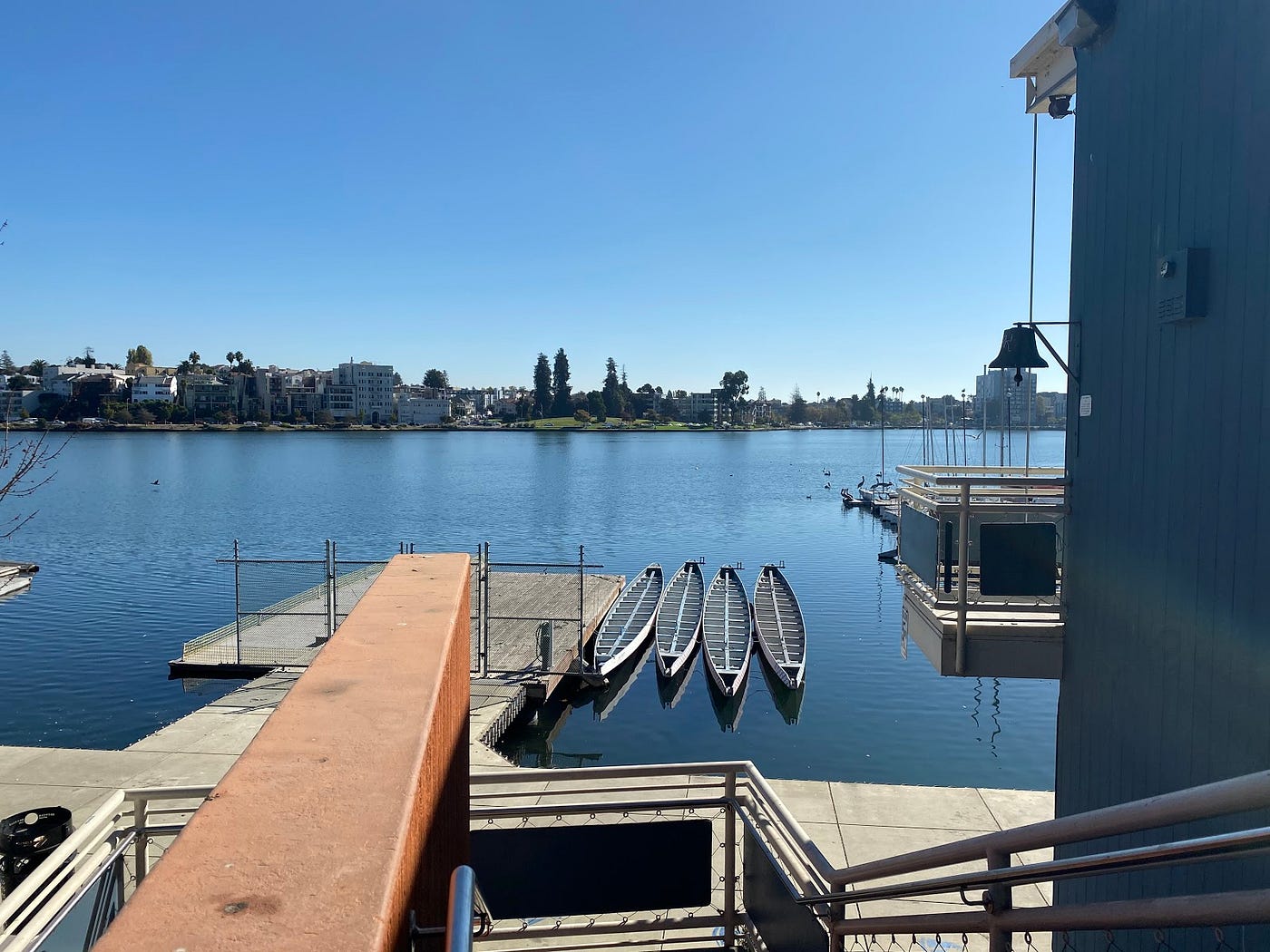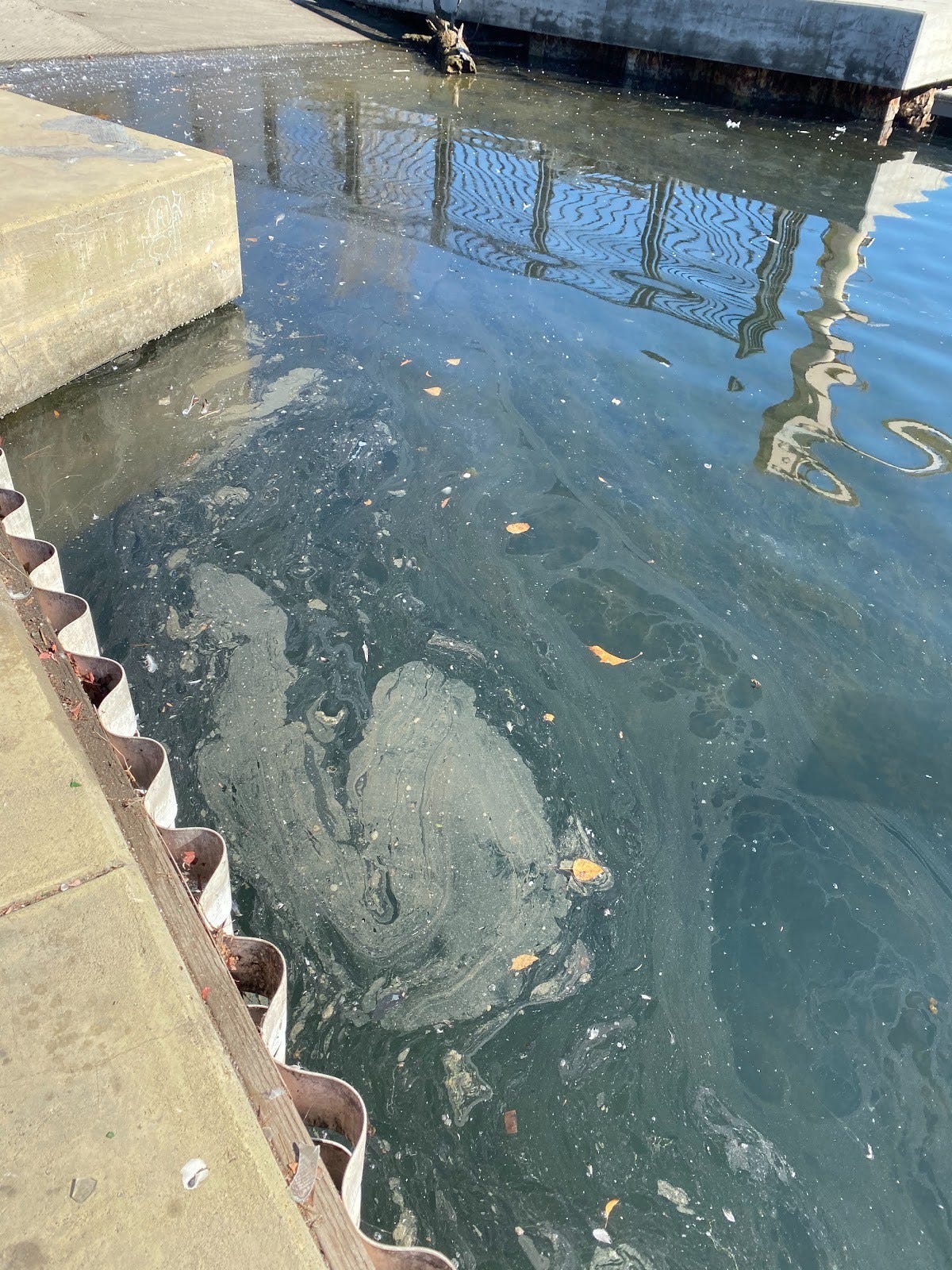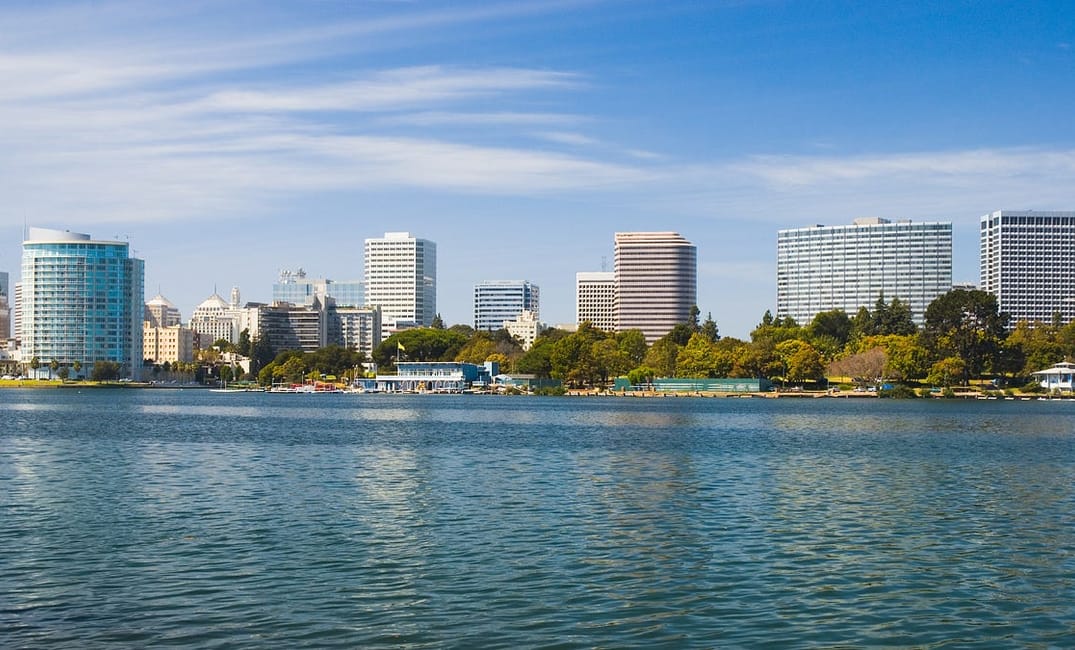
On the sunny side of the bay, flocking to Lake Merritt to bask on its grassy shores is a weekend ritual that Oaklanders live for. Even on the hottest days we’ve recently endured, though, you won’t see anyone dare to dip into the water itself. There’s an unspoken understanding that the actual water in Lake Merritt is, well, pretty gross.
I recently conducted a poll on my Instagram stories with this simple question: “Would you swim in Lake Merritt?” About 10 of my friends answered, resoundingly, with “No!” Several simply responded with laughing emojis. Others cited trash, pollution, and sewage that’s funneled into Lake Merritt as reasons not to take a dip. Are their claims valid? The answer is: sort of.
Sign up for The Bold Italic newsletter to get the best of the Bay Area in your inbox every week.
Lake Merritt celebrates 150 years as the nation’s first wildlife refuge this year, and this anniversary got us thinking at The Bold Italic — just how toxic and polluted is this beloved body of water, really? What would actually happen if you actually tried to swim in it?
To understand how Lake Merritt became what it is today, we have to take a look at history. Despite what many think, Lake Merritt is not man-made. It’s actually a brackish body of water (one that has more salinity than regular freshwater but not as much as seawater) that’s connected to the Bay. It began as a slough, meaning the water had no natural current, but instead moved back and forth with the tidal flow.
In the mid-1800s, native Ohlone and Miwok peoples enjoyed bountiful salmon and wildlife in what was then known as Lake Peralta. Wildlife was so abundant that in 1870, the state deemed it the nation’s first wildlife refuge.
I recently caught up with James Robinson of the Lake Merritt Institute, who told me that a lively fish population, including striped bass, and an assortment of birds are among the animals that call Lake Merritt home. We met the morning after the election; a beautiful day at Lake Merritt, where the sun beamed, and I sensed we both enjoyed a nice distraction to talk about the cleanliness of the lake.
Despite teeming with special species, the body of water formerly known as the “Lake of 1,000 Smells” hasn’t been able to shake its reputation as a polluted cesspool.
Lake Merritt hasn’t been swimmable since a swimming ban went into effect in 1897. This likely had to do with the fact that in the mid-1800s, creeks that once filtered water and hosted wildlife were converted to concrete drains. By 1884, 90% of the city’s sewage wound up in Lake Merritt’s waters. On top of that, thousands of pounds of trash polluted the lake, diminishing the amount of dissolved oxygen in the lake, a necessary marker for aquatic life to survive.
Today, Robinson promises the city’s sewage does not end up in the lake, except in instances where a pipe bursts and there is leakage or seeping. The main obstacle to swimability today, he notes, is trash.
I’d long assumed that the trash clogging Lake Merritt’s edges was simply from Oaklanders throwing their litter into the lake. That’s not the case, though — at least, not directly. Instead, it comes in from over 60 storm drains from the streets that lead into Lake Merritt. “The trash in Lake Merritt correlates with the rainfall; as the rain increases, most of the trash gets pulled into the lake from the streets,” along with “fertilizers and oils,” Robinson clarifies.
In addition to serving as a receptacle for our city’s trash, there have been reports of Oaklanders pouring contaminants into storm drains, such as household cleaners or antifreeze, which only further pollutes the lake.

Robinson says they use a few ways to test water quality in Lake Merritt — dissolved oxygen, salinity, and stratification (whether the salt and freshwater are not mixing together, which can cause problems). They also do occasional bacteria tests, especially when a large number of birds are around.
After covering the basics with him, I finally popped the question: What would happen if you tried to swim in the lake?
We both began to laugh.
In short, he says, Lake Merritt has low dissolved oxygen levels, which is unsafe for humans. The danger has less to do with the water quality itself, but rather what can thrive and grow in the water — such as bacteria — when the oxygen levels are low.
For example, you could get scabies from swimming in the lake, according to Dane Nelson of Black Oak Wilderness School. Anecdotally, a friend of theirs swam in Lake Merritt several years ago and shortly thereafter broke out in scabies. Scabies is a contagious, intensely itchy skin condition caused by a tiny, burrowing mite. In short, it’s not fun to get and you don’t want it.
Robinson says the lake is mostly salt water, which can kill freshwater organisms and certain bacteria, like giardia, that thrive in freshwater lakes. “If this were a freshwater lake, you’d have to be more cautious. [The salt water] gets rid of a lot of stuff… if there are elevated bacteria levels for the pelicans or cormorants. You would probably get an ear infection or an eye infection, though.”
Looking at a photo (below) of what Robinson referred to as “decomposing organic matter,” in the lake, I’m not sure I’d want to risk wading through the shores.

Robinson recalls that a couple of years back, he did spot a swimmer preparing for a triathlon, swimming in the lake alongside a kayak. In this instance, they gave the illegal swimmer a warning. There are other accounts of folks being arrested for trying to swim in the lake.
As for drinking the water? Don’t even think about it. For starters, it’s salt water. And drinking salt water in higher quantities can be lethal. Add onto that that the water could be carrying bacteria from the birds, and you might be looking at ingesting nasty organisms and some serious stomach and GI issues.
Given the danger of the water to humans, I also wondered if the birds or other lake dwellers ever got sick from the lake itself. Robinson noted it wasn’t from the water (although historically that has happened; there was an incident of massive fish kills due to low oxygen in 1939), but sometimes the birds ingest too much trash, which kills some of them every year.
One creature for which Lake Merritt is most certainly toxic? Your unwanted turtles. Robinson told me that there has been a repeated issue of folks dumping freshwater turtles into the lake where sadly, saltwater will kill them.
Over the years, there have been attempts to clean up the water. In 2002, Oakland voters passed Measure DD, a $198.25 million bond measure focused on waterfront improvements at Lake Merritt and the Estuary, but some evidence suggests that the water quality hasn’t changed much since the measure went into effect.
The lake continues to face challenges, albeit new ones, in terms of toxicity.

One of the more surprising threats to the cleanliness of Lake Merritt in modern times is the illegal dumping of scooters. We’ve all seen them buzzing about the streets of San Francisco and Oakland. But now, Robinson claims, these scooters are ending up dumped into Lake Merritt. By people apparently opposed to them making a statement in protest. Powered by lithium batteries, these scooters pose a huge risk to the overall cleanliness of the lake, as lithium batteries decompose in salt water and can leak into the water. These are overtly toxic not only to humans but to the wildlife that call Lake Merritt home.
The Lake Merritt Institute has written to the scooter companies to ask them to clean their scooters out of the lake. Results have been mixed, with the startups claiming they’ll take responsibility but then leaving them to decompose, Robinson says, leaking more than 100 gases, including carbon monoxide. In strong enough quantities, these gases can be fatal and at the least, cause strong irritation to the skin, eyes, and nasal passages, not to mention harming local wildlife.
As Robinson and I finished talking, he pointed to the large array of birds flying above the lake as we spoke — herons and cormorants gliding above the water’s surface. His passion for the lake and its wildlife was evident.
Ryan Warden, a resident of Oakland and an ecologically-minded frequenter of Lake Merritt, also noted his glee at the large array of pelicans diving onto the lake. Both felt that the presence of these birds suggested the health of Lake Merritt’s ecosystem. It may not be swimmable for us, but the birds and fish are thriving.

In the end, I realized, the question of the toxicity of Lake Merritt isn’t just something to laugh about. Warden, an Oakland and nature enthusiast, asked me to consider what it would mean if Oakland invested in restoring waterfront spaces to make them swimmable again. Can you imagine what our city would be like if we really could swim and gather in the middle of Lake Merritt? What if they roped off a specific, clean area for human enjoyment? To my knowledge, there is no serious proposition to make it be swimmable, but us Oaklanders can dream.
Warden says he’s spotted people swimming at Estuary Park; Estuary Park is adjacent to the Oakland Estuary and the opening to the Lake Merritt Channel. These people might not be swimming in Lake Merritt, but they are swimming in the body of water that it connects to, suggesting that the water flowing into the Bay is cleaner than Lake Merritt itself (something Robinson also corroborated).
Maybe we are actually asking the wrong question here. Oaklanders seem to unanimously know that swimming in Lake Merritt is a bad idea and has been for a very long time. Perhaps the more interesting question is: Would it be worth it to restore Lake Merritt back to being swimmable? What if we invested in our precious little community lake and found a way to keep the trash from flowing in… Could we make Lake Merritt swimmable again? It is 2020, after all, and stranger things have happened.
And on that note, Robinson noted that volunteerism has seen a steep decline at the Lake Merritt Institute since Covid began. They are taking precautions for safety and welcome new volunteers in helping to remove the 20,000 pounds of trash or so that they remove each year. For further information or to lend a hand, you can contact Lake Merritt Institute.
“This was the 150-year anniversary for the wildlife refuge,” says Robinson. “And this was the first wildlife refuge in North America. There are so many treasures here and so many people that put in work to get it to the place that it is today.”
Sources
- “What Would It Take to Make Lake Merritt Swimmable?” | KQED
- “What’s lurking beneath Lake Merritt? More than you think” | The Oaklandside
- “Professional Water Quality Studies” | STEM at Lake Merritt
- “Estuary Park” | Waterfront Action
- “Lithium-ion batteries found to produce toxic gases” | E&T







